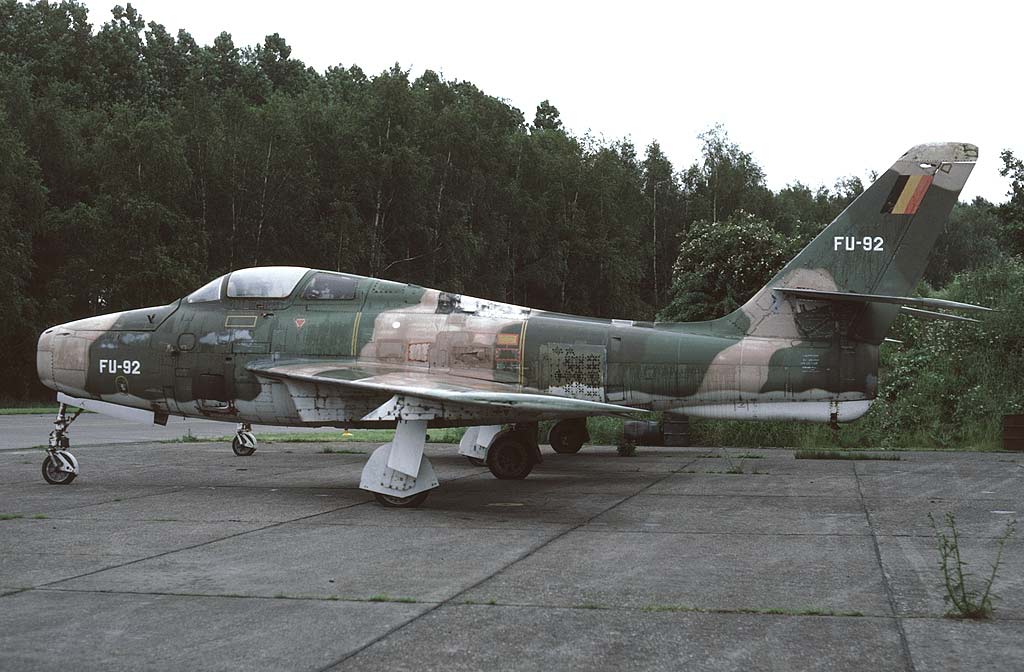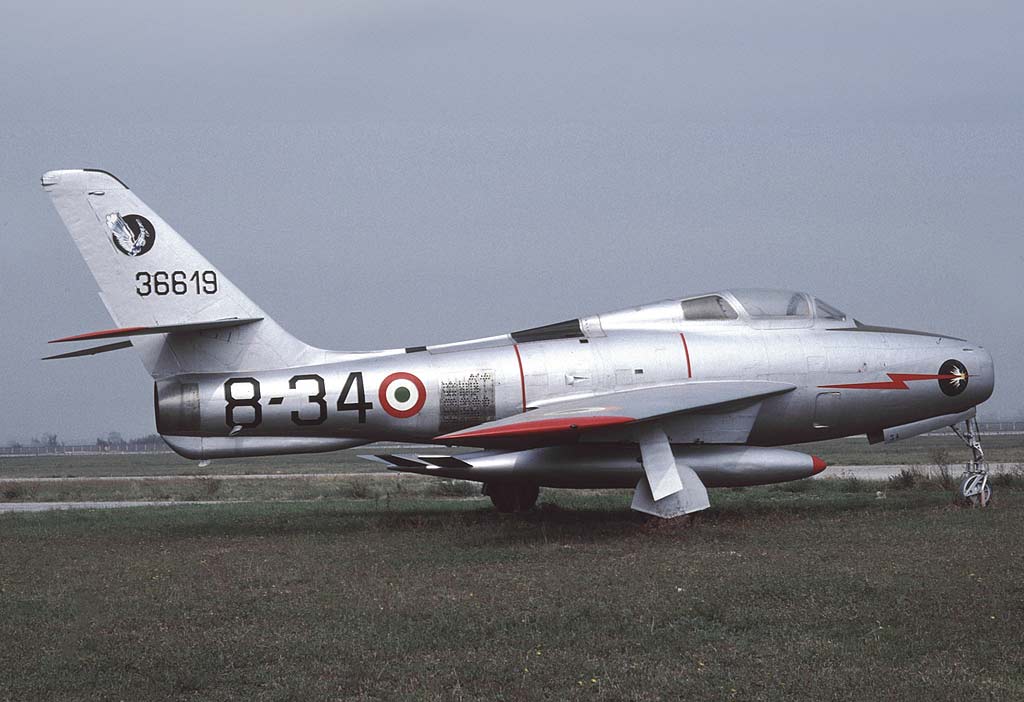The F-84F Thunderstreak, a swept-wing turbojet fighter-bomber, was known for its versatility and role in Cold War-era NATO operations.
In brief
The Republic F-84F Thunderstreak, developed in the early 1950s, was a crucial part of NATO’s air capabilities during the Cold War. As an evolution of the straight-wing F-84 Thunderjet, the Thunderstreak featured a swept-wing design, significantly improving its performance at high speeds. Powered by a Wright J65-W-3 turbojet, it combined the roles of fighter and bomber, demonstrating considerable versatility. While it faced initial production challenges and engine reliability issues, the F-84F became a mainstay in the air forces of several NATO countries. It saw action in various conflicts, most notably in the Suez Crisis, and its ability to carry nuclear weapons marked it as a key component of tactical air power during the Cold War era.
The Republic F-84F Thunderstreak represents a significant period in jet aviation, showcasing advancements in design and multi-role capabilities.

History of the Development of the Republic F-84F Thunderstreak
In the context of the early Cold War, the need for a superior jet fighter-bomber was paramount. The development of the F-84F Thunderstreak by Republic Aviation was a response to this requirement, aimed at improving upon the earlier F-84 Thunderjet.
The program was launched to provide the United States Air Force (USAF) and NATO allies with a more capable aircraft in terms of speed, range, and payload. The first flight of the F-84F occurred on June 3, 1950, marking a significant advancement in jet fighter technology.
The Thunderstreak did not have a specific NATO nickname, but its contribution to NATO air power was significant.
Design of the Republic F-84F Thunderstreak
The F-84F featured a swept-wing design, a notable departure from the straight-wing layout of its predecessor. This change allowed for better performance at high speeds and greater maneuverability. The aircraft was powered by a Wright J65-W-3 turbojet, producing around 7,220 pounds of thrust.
Measuring 43.5 feet (13.3 meters) in length with a wingspan of 33.7 feet (10.3 meters), the Thunderstreak was designed to carry a range of armaments, including nuclear weapons, making it a versatile fighter-bomber.
Despite its advancements, the F-84F faced challenges, such as engine reliability issues and limited range compared to some of its contemporaries.
Performance of the Republic F-84F Thunderstreak
The F-84F Thunderstreak’s performance was a significant improvement over the earlier Thunderjet. It reached a top speed of 695 mph (1,118 km/h) and had a service ceiling of 40,500 feet (12,345 meters). The aircraft’s range was approximately 1,000 miles (1,609 kilometers).
Compared to aircraft like the North American F-86 Sabre, the F-84F was less agile but offered greater payload capacity and versatility as a fighter-bomber.
Variants of the Republic F-84F Thunderstreak
The F-84F Thunderstreak had several variants, including:
- RF-84F Thunderflash: A reconnaissance version with cameras in place of the nose armament.
- YF-84F: Prototype versions used for testing and development.
- XF-84H Thunderscreech: An experimental variant with a turboprop engine, known for its loud noise.
Each variant had specific modifications tailored to its role, whether it was reconnaissance, experimental testing, or improved performance.

Military Use and Combat of the Republic F-84F Thunderstreak
The F-84F was armed with six 0.50-inch M3 Browning machine guns and could carry a variety of bombs, rockets, and nuclear weapons. It saw extensive service with the USAF and NATO allies, playing a key role in Cold War air operations.
The aircraft participated in the Suez Crisis and other minor conflicts, proving its worth as a fighter-bomber. It competed with aircraft such as the Mikoyan-Gurevich MiG-15 and MiG-17 in terms of performance and roles.
The Thunderstreak was exported to several NATO countries and was eventually replaced by more advanced aircraft like the F-4 Phantom II and F-105 Thunderchief.
The Republic F-84F Thunderstreak holds a significant place in Cold War aviation history. As a mainstay of NATO’s tactical air forces, it bridged the gap between early jet fighters and the later generation of supersonic aircraft. Its multi-role capability, along with its widespread use among NATO allies, underscores its importance in the evolution of jet-powered military aviation.
Back to the Fighter Jet section.